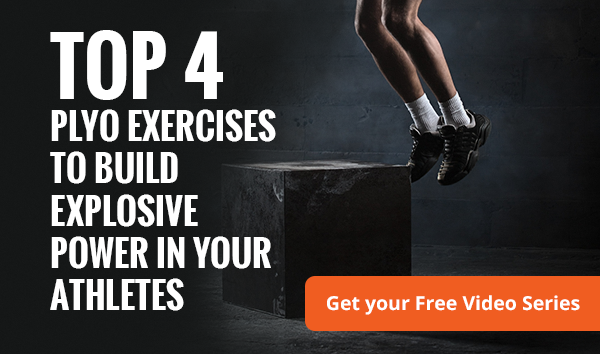[wpfblike]
Young Athletes Programming Do Reduce Injuries
You can’t build a house on quicksand.
You just can’t.
When the base isn’t sturdy, the structure is bound to
topple.
And that’s the only real lesson you need to understand
when it comes to injury prevention for young athletes.
It’s all in building a foundation.
From the ground up.
As Trainers and Coaches, our entire obligation when
working with younger athletes (6 – 13 years old) is to
fill them with as much athletic knowledge as possible.
Nothing ‘sport specific’.
Nothing ‘position specific’.
Just a full and complete warehouse of information.
Force production and absorption.
Speed and agility skill.
Lift mechanics and positioning.
Teaching young athletes how to perform these critical
elements of sporting success in the undeniable key
to the becoming champions.
But it’s also the most important factor in preventing
injuries as well.
And that is one of the main issues we have wrong in
this industry.
True injury prevention does not come in the form of
6-week programs geared towards lessoning the risk of
certain incidents.
Real injury prevention occurs naturally as a secondary
result of proper developmental training.
It is not an isolating issue that needs to be addressed
separately.
Case in point, I was reviewing an ‘ACL Prevention’
program offered by a local hospital last week and saw
the curriculum they teach their young athletes during
this 6-week course:
a. Deceleration Techniques
b. Jumping and Landing Mechanics
c. Proper Strength Training Technique
Is there anything in there that shouldn’t automatically
be included in a well designed athletic development
training system?
What denotes this specifically as an ‘ACL Prevention’
program?
A good friend and colleague mine, Alwyn Cosgrove, is
found of saying, "If it isn’t injury prevention that
doesn’t that make it automatically injury promotion?"
Alwyn’s comment is meant to make you think.
All quality training programs should be based on
preventing injuries.
If they aren’t, than they’re promoting them – which
doesn’t seem to make any sense.
In the case of young athletes (6 – 13), the most
critical factor in preventing injuries is in understanding
the science and practical application of coordination
development.
Balance
Spatial Awareness
Kinesthetic Differentiation
Rhythm
Movement Adequacy
How each of these commodities apply to a training
session.
How to create fun and engaging drills for each of them.
Why they are critical for both future performance and
injury prevention.
And it seems to me that when it comes to working with
younger athletes, very few Coaches and Trainers truly
seem to get it.
ACL and other debilitating injuries that occur in the
teenage years can be prevented by applying the right
kind of exercise stimulus while athletes are still
very young.
Maybe worth looking at a resource that is considered
one of the greatest information products ever produced
when it comes to the training and development of young
athletes.
Complete Athlete Development has been field tested on
more than 15,000 young athletes worldwide and changed
the lives of countless Coaches, Trainers and Parents.
I’ve been coaching for 13 years now.
Not one major injury suffered to a single athlete
yet.
Could be chance.
Maybe I’m just lucky.
Or perhaps there’s some stuff about injury prevention
that you need to know better?
Have a look at Complete Athlete Development and find out –
http://www.developingathletics.com/cad-short-copy.html
Over 3.5 million young athletes will get injured playing sports
this year in the United States alone.
Tragic but largely preventable.
Give CAD a try –
http://www.developingathletics.com/cad-short-copy.html
‘Till next time,
Brian
